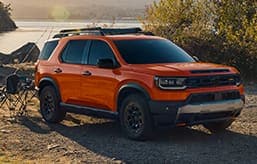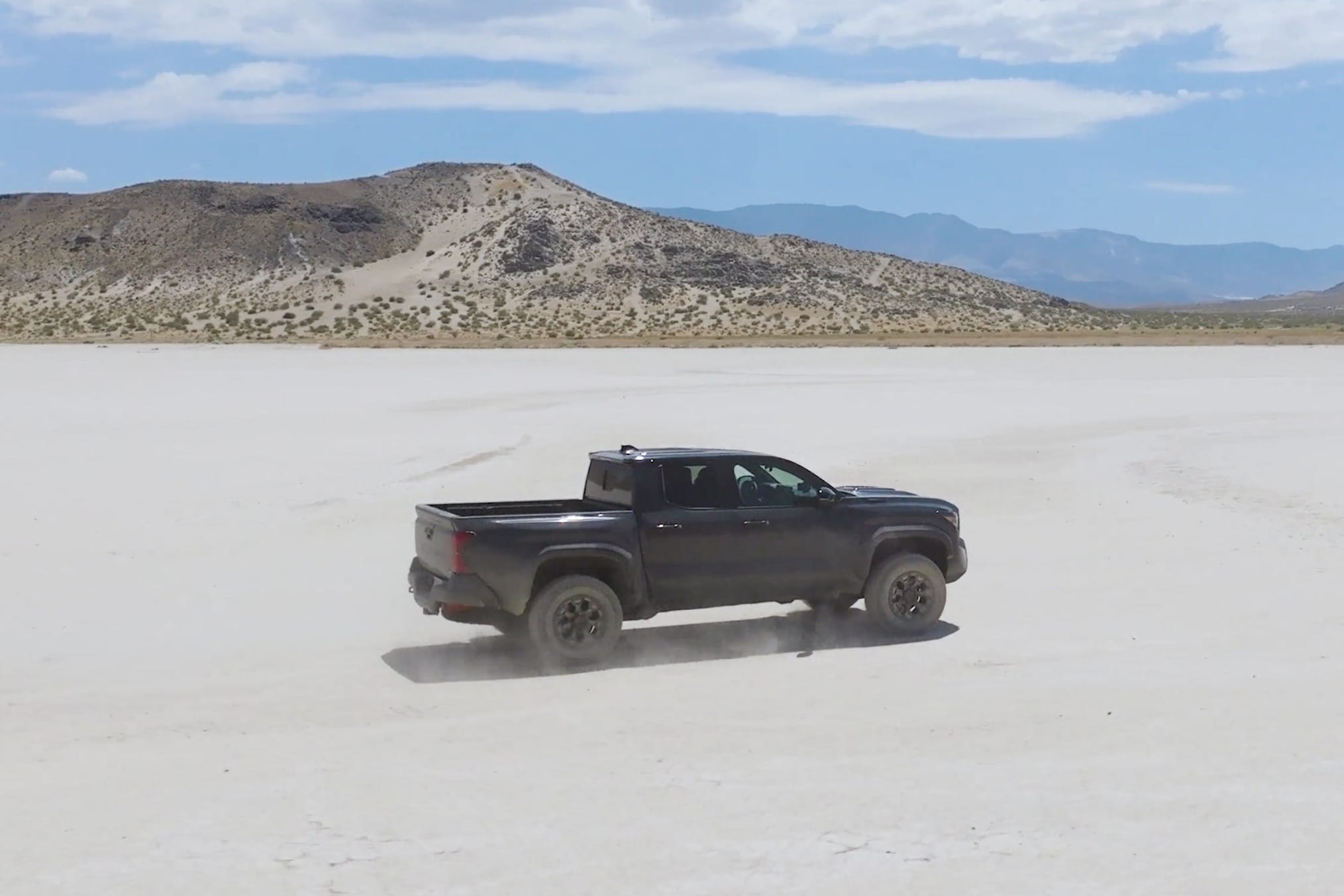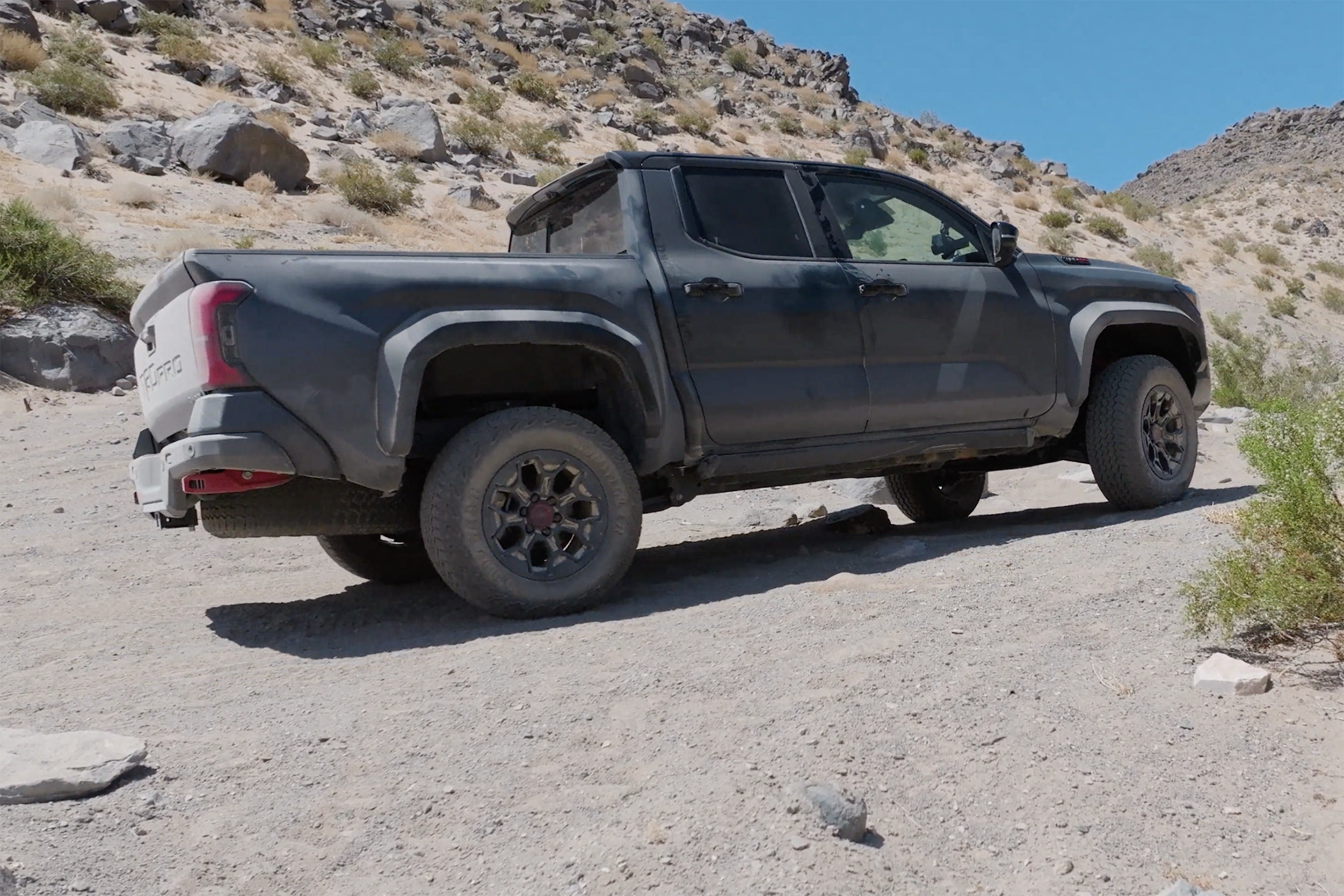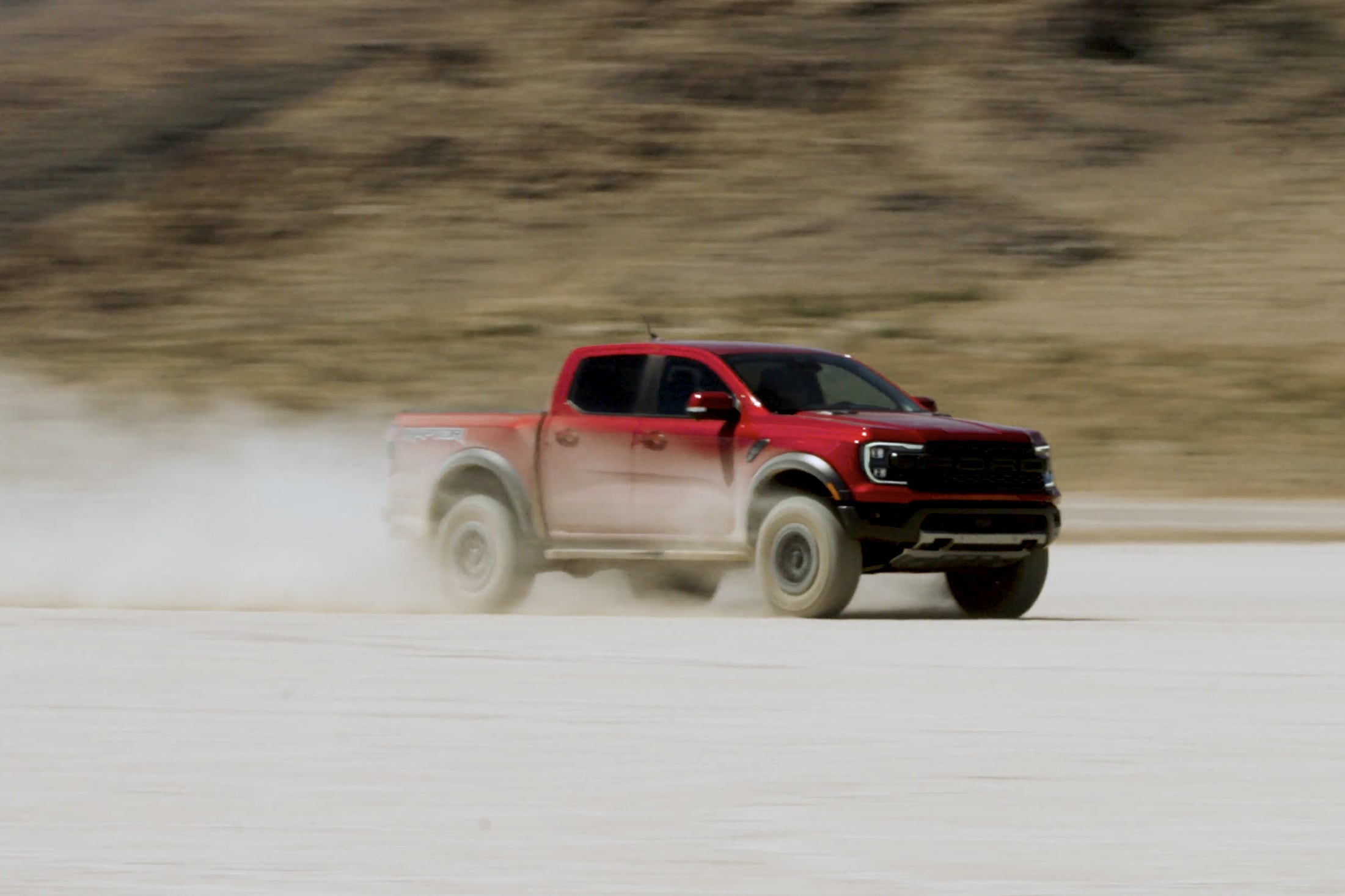- The Colorado ZR2 Bison, Ranger Raptor and Tacoma TRD Pro are the top-tier off-road midsize trucks from Chevy, Ford and Toyota.
- Each has plenty of power, lots of ground clearance and sophisticated suspension tech.
- Which is best? Watch our video to find out.
Chevy Colorado ZR2 Bison vs. Ford Ranger Raptor vs. Toyota Tacoma TRD Pro: Off-Road Shenanigans
We test these top-tier midsize off-roaders in the dirt
It's a good time to be an off-road truck fan. The Chevy Colorado ZR2 Bison, Ford Ranger Raptor and Toyota Tacoma TRD Pro are in fierce competition to win the midsize off-road crown. However, each truck has its own specific take on exactly what "off-road" means. Sure, each one can hit the whoops and rocks and come out the other end unscathed. But which one does each test best?
The contenders
The Colorado ZR2 Bison gets the top tune of Chevrolet's 2.7-liter turbocharged four-cylinder engine. It pushes out 310 horsepower and 430 lb-ft of torque and is paired with an eight-speed automatic transmission. Front and rear differential lockers are standard on this trim, as are meaty 35-inch Goodyear Territory tires wrapped around 17-inch wheels. Chevy uses Multimatic DSSV dampers with spool-valve technology that can change from cushy to stiff depending on the terrain. The ZR2 Bison as it sits comes in at right around $65,000 including destination.
Ford finally released the Ranger Raptor in the United States in 2024 and it is a beast. Under the hood is 3.0-liter turbocharged V6 with an output of 405 hp and 430 lb-ft of torque, and a 10-speed automatic gearbox is standard. Like the ZR2 Bison, the Ranger Raptor gets front and rear lockers, but its shoes are a bit smaller. The Raptor comes with 33-inch BFGoodrich KO3 tires on 17-inch wheels. Ford uses 2.5-inch Fox live-valve shocks to smooth out the ride, and they change their damping quality when the fluid is hit with an electrical charge. These shocks are a bit more complicated than what’s found in our other two testers. Our truck is priced at just under $60,000.
Finally, we have the 2024 Toyota Tacoma TRD Pro. This truck has a 2.4-liter turbocharged four-cylinder hybrid. Yes, this pickup is electrified. Total output is 326 hp and 465 lb-ft of torque and an eight-speed automatic transmission puts the power to the ground. The TRD Pro only has a rear differential locker, but it does have a front sway bar disconnect for better articulation. The Toyota has the smallest tires of the three; the Goodyear Territory rubber measures just 32 inches on 18-inch wheels. Like Ford, Toyota looked to Fox for its suspension system, but nixed the complicated live-valve technology. Our tester comes out to right around $65,000 including destination.
Floor it
We marked out a quarter-mile distance on a dry lake bed to test the trucks’ acceleration. While the Tacoma’s hybrid powertrain started off strong, power fell off midway through the powerband and we ended up crossing the line in just over 17 seconds at a speed of 78 mph.
However, that time bested the Colorado's. Even in Baja mode, which should be a boon in a situation like this, the ZR2 Bison shifted slowly and lost momentum in the process. It crossed the line in 17.5 seconds at 76 mph.
Instead, it was the Ford that literally ran away with the crown. In Baja mode, the Ranger Raptor ripped off quick shifts and the engine pulled like a champ until the very end. And it sounded good to boot. Final time: 15.27 seconds at 88 mph. Doc Brown would be proud.
Hit the whoops
Of course, in the desert, speed means nothing if you can’t take the hits. For our next test, we found a section of trail that was flat at the start to build up some speed and then degraded into a series of whoops that tested the trucks’ suspension and wheel travel. The goal was to keep things moving quickly while still feeling confident and stable behind the wheel.
Again, the Ranger Raptor prevailed here. The truck has nearly 10 inches of travel in the front and over 11 inches of travel in the rear. This allowed the wheels to remain in contact with the ground more often than not. The Fox shocks kept the truck composed in both the compression and rebound strokes and our top speed through this section was 70 mph.
The Colorado’s DSSV dampers felt great on the compression stroke, aided in part by the Bison’s special jounce bumpers that can really take a hit and keep going. However, on rebound the truck got a bit upset. It would be interesting to see how this would change with just a bit more weight in the bed besides the spare tire (which totally kills rearward visibility, by the way). The ZR2 Bison has the same amount of travel as the Ranger Raptor, but we managed only 63 mph before losing confidence in the whoops.
And what of the TRD Pro? Of the three, it has the least amount of suspension travel: 9.6 inches in the front and 10.2 inches in the rear. The shocks performed adequately, but in the end we only managed 60 mph through this section. Our Tacoma came with fancy-pants IsoDynamic front seats with air shocks of their own. In theory these should have made the ride over rough stuff like this more comfortable, but we didn’t notice any big difference compared to the "standard" seats in the Ford and Chevy.
Rocking out
After the whoops, we found our way to a rock trail to test the approach, breakover and departure angles of our trucks. We started with the Colorado, as it has the best geometry of the bunch. We’re talking an approach angle of 38.3 degrees, departure angle of 25.1 degrees and a breakover angle of 24.6 degrees. With the larger 35-inch tires, the Colorado's ground clearance is 12.2 inches and the Bison package adds steel skid plates on the front, transfer case, differential and fuel tank.
Although the truck seemed a bit larger than the others from behind the wheel, it easily conquered the trail. The big tires were able to scramble up and over the rocks and we never came close to scraping the underside. We needed to use the rear locker a few times but the ZR2 Bison came out the winner in this technical section.
The Raptor was stymied by its standard side steps and smaller approach angle. Sure, the 26.4-degree departure angle and 24.2-degree breakover angle are competitive with the Colorado, but the Raptor’s approach angle of 33 degrees is laughably small for a truck like this. With 10.7 inches of ground clearance, the Raptor sits at a decent height, but the truck only has skid plates for the lower front fascia and engine. The side steps got hung up on rocks and we had to engage both the front and rear lockers to get the truck up and over a few obstacles. We also had to plan our driving lines a bit more carefully to account for the lower ground clearance and less aggressive approach angle.
We were curious about the TRD Pro and its sway bar disconnect. Would the extra articulation make up for the Tacoma's smaller tire size? Instead, what surprised us was the advanced traction control system. But let’s start with the numbers. The Toyota sits at only 9.5 inches off the ground, but still manages decent departure and breakover angles of 23.5 and 25.7 degrees, respectively. Like the Raptor, the approach angle isn’t great, at just 33.8 degrees. However, the traction control system, combined with the rear locker, brought the Tacoma out of a hole that the Raptor’s tires dug thanks to its stupid side steps. At any rate, the TRD Pro made us smile on the rocks.
Picking a winner
The Ranger Raptor won in two of our three challenges, but at the end of the day, the truck you should buy comes down to what you want most in an off-road rig. If you’re a go-fast person, you can’t beat the Ranger Raptor with its excellent powertrain, quick-shifting transmission and Fox live-valve shocks. However, those who want to spend their time on the rocks will fare better with the Chevy Colorado ZR2 Bison. It has the most underbody protection, biggest tires and highest ground clearance. The Tacoma TRD Pro is a good choice, but more of a "jack of all trades, master of none."
The TRD Pro doesn’t have too many options available, so most consumers will pay $65,395 for their Taco. However, starting prices for the Ford and Chevrolet are just a bit lower than our optioned-up testers. The Ranger Raptor starts at $57,215 while the ZR2 Bison can be had for $61,490. All prices include destination.
Don’t want to spend that kind of coin? We’ve also tested the Ford Ranger FX4, Chevrolet Colorado Z71 and Toyota Tacoma TRD Off-Road. These trucks don’t offer as much off-road capability, but they can save you tens of thousands of dollars. What’s even better is that these three not-quite-as-hardcore models are part of Edmunds' long-term test fleet, and we've got a lot more testing to do over the coming months.
Edmunds says
All three of these off-road midsize trucks will get down and dirty — and for a lot less money than their full-size counterparts.









.jpg) by
by  edited by
edited by